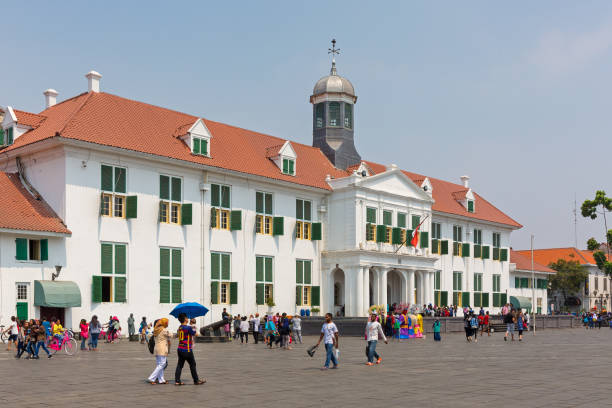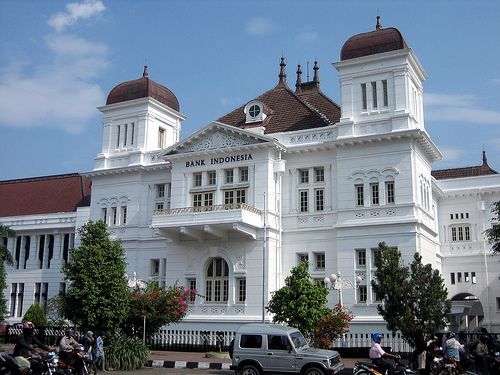I still remember the first time I laid eyes on a colonial house. It was during a random stroll through Kota Lama, Semarang. The vibe was just different. Thick walls, massive windows, and those super high ceilings. Honestly, it felt like stepping into a time machine. And I thought to myself, “Why don’t modern houses look like this?”
At first, I was just taking pictures for Instagram, no big deal. But the more I looked, the more I got curious. How could an old house like that still stand so strong? And why do so many people—especially expats—absolutely adore colonial architecture? That’s when I started digging, reading up on the history, and even chatting with some colonial homeowners in my area.
A Little History: Colonial Architecture in Indonesia

To be honest, I used to think colonial houses were just about copying European style. Turns out, there’s a lot more to it. Colonial architecture started popping up in Indonesia around the 18th to early 20th centuries, when the Dutch were busy building government offices, official residences, and schools.
But here’s the cool part: colonial houses here aren’t carbon copies of what you’d see in Europe. They’re adapted for the tropical climate. High ceilings to keep things cool, big windows for natural light, and wide verandas for chilling in the afternoon breeze. I once talked to a local architect who called this the “Indische Empire Style”—a blend of Dutch and local influences. Pretty awesome, right?
Some colonial homes even have super unique details. Intricate wood carvings on doors, old patterned tiles, and those fancy air vents that collectors go nuts for these days. I once found a colonial house in Surabaya with original teak doors that were over a hundred years old. The quality totally beats most modern furniture!
My Personal Adventures in Colonial Homes
I’m honestly obsessed with hunting down colonial houses, especially the ones that haven’t been overly renovated. One time, a friend invited me to stay at a guesthouse that used to be a Dutch official’s residence in Salatiga. The moment I walked in, the atmosphere just hit different. Cool tile floors, the creak of old wooden doors, and that faint scent of aged wood—total nostalgia.
But I won’t lie, there are challenges. Colonial houses can be a bit spooky at night, especially if the lighting is dim. I remember one stay where the creaking floorboards kept me up half the night. But honestly, that just made it more memorable!
I also love joining architecture tours in old cities like Jakarta, Bandung, and Malang. The guides usually share stories about the houses, who built them, and all the changes over the years. Sometimes you get a bonus ghost story—just adds to the charm, I guess.
Tips for Enjoying and Maintaining Colonial Homes
If you ever get the chance to live in or visit a colonial house, here are a few tips I’ve picked up:
- Keep It Clean and Well-Ventilated
Colonial homes usually have great natural ventilation, but dust builds up fast because of all the nooks and crannies. I always bring a small broom or handheld vacuum to clean tricky spots, especially under windows and along the high ceilings. - Watch Out for Wood Damage
Most colonial houses use teak or merbau wood, which is super durable, but termites are the enemy. I once helped a friend restore a colonial house and we found beams that were totally eaten up. Best advice: check for termites regularly and use anti-termite treatments at least once a year. - Care for the Tiles and Details
Old patterned tiles are a treasure. Don’t clean them with harsh chemicals, or you’ll lose the color. I usually use warm water with a bit of mild soap. If any decorative elements are damaged, it’s better to consult a specialist than try to DIY and make things worse. - Enjoy the Outdoor Spaces
Many colonial homes have gardens or verandas. I love sitting outside in the late afternoon with a cup of coffee, soaking in the breeze. Seriously, it melts the stress away.
The Fun of Colonial House Hunting in Indonesia
If you love exploring, hunting for colonial houses is a blast. There are tons of cities in Indonesia with awesome colonial districts, like Kota Lama Semarang, Braga in Bandung, and Kota Tua Jakarta. I once cycled around Braga, snapping photos in front of old buildings and chatting with caretakers whose families have lived there for generations.
Sometimes you’ll stumble on colonial houses that have been turned into cafes or boutique hotels. The vibe is totally different from modern buildings. Some places still use antique furniture, crystal chandeliers, and stained glass windows. If you’re into photography, these spots are a must-visit!
I even joined a heritage community on Instagram. From there, I got tips about lesser-known colonial houses. Sometimes the owners are happy to share stories about their homes’ history. I once got to see a private collection of old Dutch-era photos—seriously priceless.
The Deeper Value: Lessons from Colonial Homes
For me, colonial houses aren’t just about architecture. There’s a deep sense of history and life behind every wall. I once spent an afternoon talking with a lady who was born and raised in a colonial home. She told me stories about her childhood, the Japanese occupation, and her family’s struggle to keep the house.
Sometimes I wonder if modern houses will ever have stories like that. Maybe not. Colonial homes have taught me to appreciate cultural heritage and the importance of preserving history. It’s not just about the style, but the meaning behind it.
I’ve also learned about tolerance and adaptation. Colonial architecture is a blend of cultures—Dutch, Javanese, Chinese, and more. Everything fits together, nothing dominates. That’s a pretty good lesson for living in a diverse country like Indonesia.
Final Thoughts: Let’s Keep Colonial Homes Alive
Honestly, it breaks my heart to see colonial houses demolished or neglected. So many have been replaced with modern shops or apartments. But colonial homes are part of our city’s identity and national history.
If you get the chance, join a heritage preservation community or just share photos of colonial houses on social media. The more people care, the better the chances these homes will watitoto survive.
I’ll keep hunting, learning, and sharing stories about colonial houses. Who knows, maybe one day I’ll own one myself (a dream for now, but hey, why not?). What matters is to never stop learning and appreciating the past.

